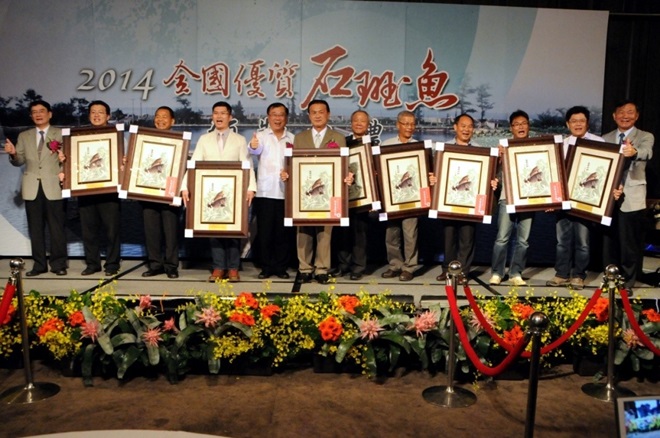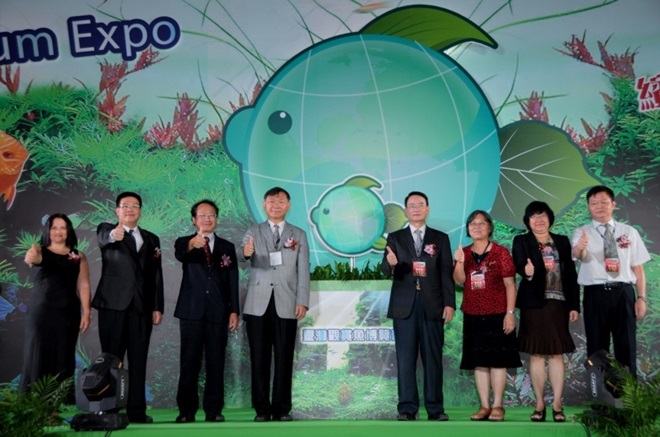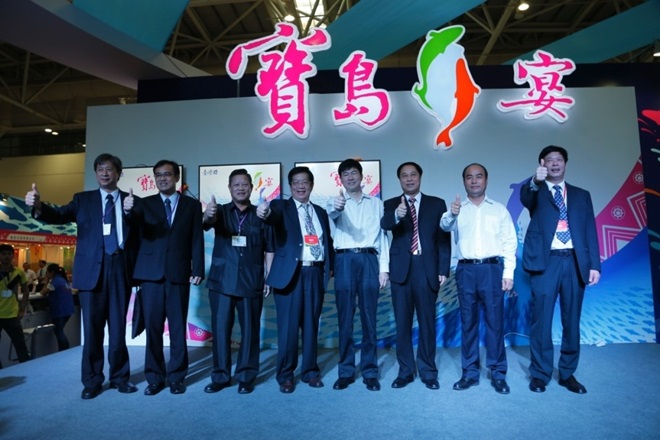Develop International Markets for Taiwan’s Aquatic Products
2015.8 (Issue No. 278)
I. Preface
Taiwan is a maritime nation. The fishery industry is not only important to the nation’s agricultural industry but also has driven the development of storage, processing, distribution, marketing and other related sectors. In 1946, Taiwan’s fishery production was only 16,862 tons. But with the development of the nation’s fishery sector, in 1961, the amount of exported fishery products exceeded that of imported ones for the first time. In 2014, the nation’s fishery production reached 1.4 million tons. It exported fishery products of 800,000 tons, which accounted for 57% of the total annual production and valued US$1.9 billion. It imported fishery products of 490,000 tons with a value of US$1.3 billion. Apparently Taiwan’s fishery industry is export-oriented. As the world’s 21st largest country of fishery products, Taiwan is rich in fishery resources. Due to the limited domestic market, however, the market expansion of international market has become a priority for the nation to cope with global trade liberalization.
II. Taiwan’s aquatic products trade is export-oriented
In 2014, Taiwan imported aquatic products valued US$1.3 billion, mainly from China, Vietnam, Norway, Japan, Chile and India. Its imports include fish guano, salmon, frozen crustaceans, coral, and other frozen fish, mostly what the domestic market scarcely produces.
In 2014, Taiwan exported aquatic products valued US$1.9 billion, mainly to Japan, China, Thailand, the United States, Hong Kong and Indonesia. Its export markets focus on Asia and the Pacific Ocean’s neighboring countries. And its exports include tuna, skipjack, grouper, Pacific saury and squid, mostly sufficient in supply in the domestic market and with high export competitiveness. In addition, the ornamental fish industry and grouper industry--two of the six newly developed industries in the “Quality Agriculture Development Program” promoted by the Executive Yuan in 2009--as well as tilapia and milkfish with large domestic production have tremendous potential in export.
III. Fishery sector is competitive in the international markets
Taiwan’s offshore fishing industry generates an annual output of NT$40 billion, ranking the third in the world. The market size of its tuna longline fishery sector, in particular, ranks the world’s top one. Its fishing grounds are distributed in the three oceans. Recently the nation has actively participated in regional fisheries management organizations, and included relevant conservation and management measures into domestic regulations. Meanwhile, the nation strengthens international cooperation on fisheries, which can help the sustainable development of the nation’s offshore fishing sector. The tuna longline fishery industry annually produces 280,000 tons while the tuna purse seine sector produces 220,000 tons. In 2014, Taiwan exported tunas of 150,000 tons, mainly to Japan, Thailand, Mauritius and Indonesia, and unloaded them for sale in foreign bases. The nation’s annual production of squids averages 150,000 tons as the world’s top two. Taiwan’s annual production of Pacific sauries has been over 160,000 tons since 2010 and surpassed Japan for the first time in 2013 as the number one in the world. In 2014, the production of Pacific sauries reached 230,000 tons as the world’s top one again. In the same year, 150,000-ton Pacific sauries were exported mainly to South Korea, China, Russia and Vietnam. After Taiwan and China signed the ECFA, the export of Pacific sauries to China grew from 2,000 tons in 2010 to 40,000 tons in 2014.
In addition, Taiwan lies in the subtropical zone, particularly suitable for aquaculture. Its fish breeding and aquaculture production technology take the lead in the world. The nation breeds more than 120 species and produces 300,000 to 350,000 tons annually. Taiwan’s grouper aquaculture industry, for instance, has been ranking second in the world for the past three years. Its output value exceeded NT$8.3 billion in 2014. To accelerate the expansion of China’s market, the government opened direct transportation of living fish carrier vessels to Hong Kong in 2008. Then in 2010, the government approved direct transportation of living fish carrier vessels to China, rewarded the construction of high-efficient living fish carrier vessels, and announced China’s 23 ports of direct transportation. In 2010, 4,159-ton groupers were exported to China. After the ECFA took effect in 2011, the export of groupers to China grew year by year, reaching 18,034 tons in 2014. Moreover, the annual production of milkfish is around 65,000 tons, 80% for the domestic market while 10,000 tons of them for export, mainly to the United States and Middle East. The export of milkfish to China was merely valued US$70,000 in 2010. After the ECFA took effect, China and milkfish farmers in Tainan began contract aquaculture from 2011, and Taiwan’s export of milkfish to China grew to 1,539 tons with a value of US$5.5 million in 2013.
Taiwan’s annual production of tilapias reaches 70,000 tons, 50% for export, mainly to the United States, Canada, Saudi Arabia and South Korea. The quality of the exported tilapias is highly recognized by the European and American markets. However, foreign media had biased reports on Taiwan’s tilapia in 2013. In response, the Fisheries Agency actively introduces the nation’s quality tilapia aquaculture sector, hosts press conferences abroad for clarification, and promotes the market image of Taiwan’s tilapia. Moreover, the Agency continuously assists tilapia farmers to acquire certificates such as Aquaculture Stewardship Council (ASC), Traceable Agriculture Product (TAP) and Hazard Analysis Critical Control Point (HACCP), before exporting to South Korea, Japan, Europe and the United States. Taiwan’s eel farming is an export-oriented industry, 80% for export. Japan, in particular, is the nation’s most important export market. So far eel fries are still unable to be reproduced artificially in commercial production. Those eel fries required for the eel aquaculture sector are caught wildly. However, the eel resources in East Asia decrease rapidly in recent years, which has attracted much concern from international conservation communities. Therefore, to avoid eels listed in the appendix of Convention on International Trade in Endangered Species of Wild Fauna and Flora (CITES), which could impact the nation’s eel industry, the government actively strives to promote the conservation and management of eel resources, and participate in international cooperation. The objective is to take care of eel farmers while maintaining the sustainable development of the eel sector at the same time.
IV. Ornamental fish industry consumes low energy but produces high added value
Under active assistance by the government, the output of ornamental fish industry and its adjacent sectors grew from NT$2.1 billion in 2009 to NT$4.4 billion in 2013. Since 2009, the Taiwan International Aquarium Expo has been held annually, boosting the development of ornamental fish sector and considerable opportunities. In 2004, the ornamental fish industry participated in the Fuzhou Fishery Expo for the first time and immediately became a highlight at the Taiwan Pavilion. It completely showed the excellent aquaculture technology of Taiwan’s ornamental fish sector and the development of its adjacent sectors. In 2014, the export of ornamental aquarium reached US$4.72 million, mainly to China, Hong Kong, the United States and Singapore. Currently the government plans the Pingtung Agricultural Biotechnology Park as the center where the Pacific Operation Center for Aquaculture is set up. By simplifying and accelerating import and export procedures, more companies would be attracted to move into the park. Moreover, the government uses the pattern of store in front and factory behind to drive the development of adjacent satellite aquaculture farms. The government endeavors to construct export-oriented industrial clusters and integrate the nation’s aquaculture techniques and supply chain of satellite farms, so as to enhance Taiwan’s international competitiveness.
V. Exhibit fishery products in China and grasp ECFA opportunities
Due to the limited cross-strait relations in the past, Taiwan and China did not have much official trade in fishery products. As Taiwan and China signed the ECFA in June 2010, China opened 18 agricultural products in the early harvest list. Five of them, including Pacific saury, knife fish, milkfish, East Asian four-finger threadfin and turtle egg, would be adjusted to zero tariff in three phases within two years. To help the aquaculture sector grasp opportunities, the government organized the Taiwan Pavilion for participation of the “5th Strait Fuzhou Fishery Expo” held by China’s Ministry of Agriculture in September of the same year. The impressive results and features of Taiwan’s fishery products in the aspects of production, manufacturing, storage, marketing and leisure are widely welcome by China’s media and people. Afterwards, Taiwan's delegation joins the expo every year, as a way to introduce Taiwan’s quality fishery products via the exhibition platform. This not only leads to the signing of many letters of procurement intent, but also lets China’s public directly experience Taiwan’s excellent fishery products. It helps more Taiwan’s fishery products to enter China’s market and attracts more China’s citizens to visit Taiwan for sightseeing.
In addition, the government also assisted the National Fishermen’s Association to organize the “Taiwan fresh fish products introduction” in China’s Xiangshan of Zhejiang in 2014. It is a way to strengthen the popularity of Taiwan’s exquisite fishery products in China, and to build up the image of high-quality, fresh and safe Taiwan’s fishery products. The objective is to understand China’s market, expand China’s market, and increase the sales of fishery products.
In 2010, Taiwan exported fishery products valued US$61 million to China and imported US$129 million from China. After the ECFA took effect, Taiwan’s export of fishery products to China grew in quantity and value gradually. In 2012, the export of fishery products to China reached US$176 million while the import from China reached US$158 million. Cross-strait trade deficit has changed to trade surplus. The fishery products imported from China include other frozen fish, fish and their products and other mollusks, mainly due to domestic insufficiency. Those exported to China, including Pacific saury, knife fish, skipjack and squid, are domestically sufficient in supply and competitive enough for export. Both the years 2013 and 2014 present cross-strait trade surplus, with export prices higher than import prices.
VI. Conclusion
In response to global trade liberalization recently, the government adjusts industrial structure, combines industrial culture with retail channels to promote local production for local consumption, encourages industry members to join in international fishery product exhibitions full of market potential, and increases the visibility of Taiwan’s fishery products in international markets. Furthermore, by hosting the “fish feast,” “Taiwan top 10 mullet roe” and “Taiwan best grouper award,” the government encourages industry members to improve their processing technology and branding, so as to increase added value and industrial value chain. In the future, the government will continue to construct quality environments, facilitate transportation and sale channels, develop global markets, and assist the sustainable development of the industry. Through diversified marketing strategies, the government strives to consolidate and continue to expand major export markets such as China and Japan. Moreover, it aims to open up new markets such as Southeast Asia, Europe and Middle East. The objective is to comprehensively increase the amount and value of the nation’s fishery products for export.

2015 Taipei International Food Show-Taiwan's Pavilion

Taiwan best grouper award.

2014 Taiwan International Aquarium Expo.

2014 Fuzhou Fishery Expo-Taiwan's Pavilion showcased “Taiwan fresh fish feast”.

“Taiwan fresh fish products introduction” was held in China’s Xiangshan of Zhejiang Province in 2014.
